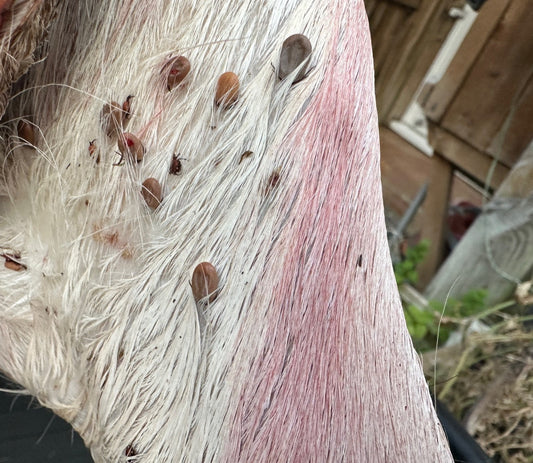Across the South East, particularly in Sussex, Surrey, and the South Downs, many woodland owners are facing the increasing challenge of managing high fallow deer populations. Overgrazing by deer not only threatens the success of woodland regeneration but also reduces biodiversity, damages understorey habitats, and results in direct losses for farmers and landowners.
Despite ongoing control efforts, consistency has often been lacking. However, with the introduction of targeted government support through Countryside Stewardship Higher Tier grants, there is now a real opportunity to bring structure and long-term planning to deer management.
Two grant options in particular stand out. The CWS1 Deer Grant, currently offering £105 per hectare per year, supports ongoing management activity where deer pose a clear risk to woodland features. Alongside this, the PA7 Species Management Plan Grant helps cover the cost of producing a written deer management plan, often the first step in identifying where and how to focus efforts.
Turning Grant Funding into Practical Solutions
One of the key challenges in deer management is transitioning from reactive efforts to a planned, site-wide strategy. Grants such as CWS1 are most effective when linked to a clear management plan backed by data. This means not just culling when damage is obvious, but having a regular, evidence-based programme that targets areas of greatest pressure and tracks progress over time.
On many estates, infrastructure plays a central role. Installing deer fencing, whether around new planting sites or regeneration zones, can be expensive, especially in remote or uneven ground. CWS1 can help offset these costs. The same goes for installing high seats or constructing basic carcass handling areas. For landowners looking to increase meat recovery or supply local markets with venison, the addition of a mobile chiller or simple processing shelter can also be supported through broader farm infrastructure funding routes, and CWS1 may help justify this investment as part of a wider deer strategy.
But infrastructure alone isn’t enough. Grant funding also allows estates to bring in professional deer managers who can carry out planned culling operations safely and humanely. Many of these professionals already work under contract across several sites, and consistent funding allows them to allocate time more reliably. This is particularly important in areas where fallow herds are mobile and require regular attention.

Ongoing deer impact assessments, often required for reporting under the terms of CWS1 are another area where funding can help. These assessments provide a baseline for understanding how much pressure deer are putting on the ground flora and regeneration, and give woodland owners a way to measure whether their management efforts are working.
Building a Strong Management Plan
The PA7 grant helps towards the cost of creating a formal Species Management Plan. This is often the starting point for engaging with CWS1, particularly for estates that have not previously had structured deer control in place.
A good plan will include clear site objectives (e.g. protecting natural regeneration, reducing browsing levels), data on deer presence and pressure, and an explanation of how management will be carried out. This might include annual culling targets, recommendations for fencing, and guidance on where and how monitoring will take place. In many cases, the plan will also include a deer impact assessment and outline the approach for keeping records on cull numbers and habitat condition, key requirements under CWS1, particularly for reviews in years 3 and 5 of the grant agreement.
Producing a plan that meets the expectations of Natural England and the Forestry Commission takes time and experience. At Wildscape, we’ve worked with a wide range of estates to pull together these documents, supported by mapping, photographic evidence, and practical input on what is achievable within the context of a working farm or estate.
Wider Benefits
Effective deer control supported by grants doesn’t just benefit the woodland. As deer pressure is brought down, natural ground flora returns, and with it a greater diversity of birds, insects, and small mammals. Young trees have a chance to establish, supporting canopy structure and carbon sequestration targets. Adjacent farmland benefits from reduced grazing damage, and landowners see fewer losses from failed planting or damaged crops.
There is also the potential to create a more self-sustaining system. Where culling is consistent and well-planned, estates can recover venison more reliably, something increasingly important as interest in local, low-impact meat grows. With the right infrastructure in place, this can form part of the economic return that helps keep deer management going over the long term.
Getting Started
For woodland owners unsure where to begin, we recommend starting with a deer impact survey to establish a baseline. From there, we can help prepare a full Species Management Plan under PA7 and advise on eligibility for CWS1. Once your agreement is in place, we support implementation, whether through direct delivery of culling, coordinating local stalkers, or helping you manage reporting requirements.
By linking grant funding with practical, on-the-ground action, estates across the South East can take control of their deer issues in a structured, consistent, and financially sustainable way.
If you’re looking to make use of CWS1 or PA7 to manage deer on your land, or simply want to understand what’s involved, we’d be happy to talk it through. At Wildscape Deer Management, we combine professional field experience with a clear understanding of what’s expected under grant schemes, ensuring your woodland is protected, and your plans are realistic, robust and ready to deliver.






